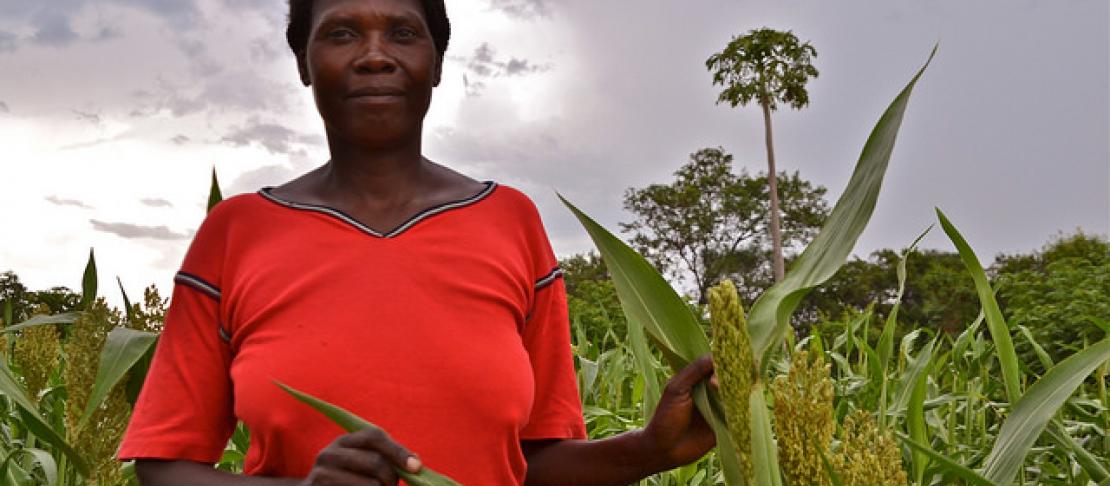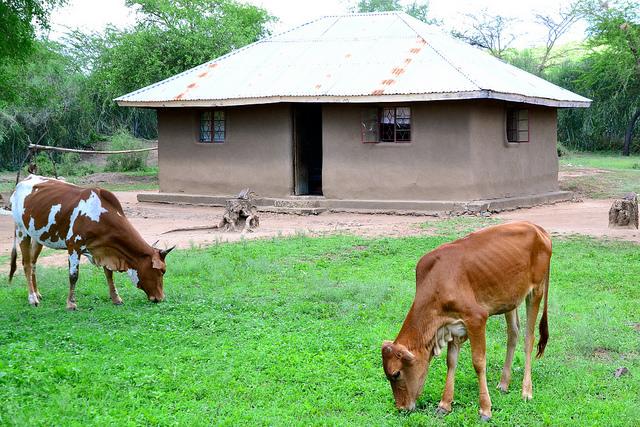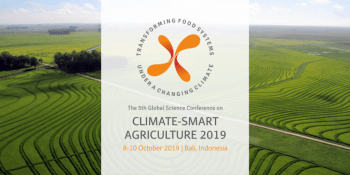Household level models help choose adaptation options

A recent workshop charted plans for modelling tools that help measure how adaptation options impact farming households, with implications for how adaptation policy is defined.
The CGIAR Research Program on Climate Change, Agriculture and Food Security (CCAFS) works to improve the livelihoods of tens of millions of farmers. These farmers live in different continents, different environments (political, cultural and biophysical) and even within a region they are highly diverse. Furthermore, the impacts of climate variability and change differ over space and time.
In consultation with farming communities, how can researchers decide what types of interventions or adaptation options are appropriate for a given group of farmers, when the impacts of climate variability and change unfold differently from year to year?
Modelling the future, one household at a time
Household level modelling is one tool that can help answer this question. The targeting of interventions such as weather-based index insurance has always been the core business of household level modelling, in which quantitative analysis and calculation methods are used to describe the behaviour and responses of farm households under current and changing conditions.
Household modelling makes it possible to study the impacts that climate adaptation and mitigation options have on farm households over time--something we aren't able to do without long-term studies in communities.
-Philip Thornton, CCAFS Theme Leader for Data and Tools
This helps to clarify where policy interventions and investments by other partners are efficient by determining whether they can positively impact large groups of farmers in similar circumstances, and how resilient households are to changing conditions depending on the adaptation options they choose. Conditions that are considered include climate variability and possible change therein, market price developments and changes in population densities, and resulting in changes in labour costs and farm sizes. Examples of adaptation options that can be considered in modelling studies are index insurance for climate risk management, crop diversification and crop and livestock production intensification.
A group of scientists working in this area recently came together in Turrialba, Costa Rica at a CCAFS-sponsored workshop to discuss the current state of household modelling, and to discuss ways to improve the way models can be used for targeting of interventions. Representatives of institutes across the CGIAR were present, as well as scientists from the Commonwealth Scientific and Industrial Research Organization (CSIRO) of Australia, UC Davis, California, and Wageningen University, the Netherlands.
During a 3-day workshop, different modelling approaches were discussed, and joint ways forward were defined. The workshop builds on earlier meetings, like the CCAFS household modelling workshop in 2012 in Amsterdam (see Van Wijk et al 2012), the CCAFS Trade off Analysis workshop in Wageningen in 2013 (see Klapwijk, 2013), and the HumidTropics Farming Systems analysis workshop in late 2013, also in Wageningen (report forthcoming).
Ready, set, action
The current workshop wanted to go a step beyond the earlier workshops by making action on modelling collaborations an explicit goal and by inviting many young and promising scientists in the early stages of their careers, to ensure that hands are available to take the plans and ideas developed during the workshop forward into concrete action. It became clear during the workshop that the research on the topic is at an unique crossroads, where the availability of farm household level characterization data and coherent socio-economic scenarios of change in the near future can be merged with the analysis tools available to answer relevant questions around how we can increase the food security and adaptive capacity of farm households, while not damaging the environment.

Tools are now in place to perform quick food security assessments across a wide range of farming systems, and can therefore be used to perform analyses together with farmers, at the level of regions within a country, thereby supplying information relevant for informing policy makers (for example about the effects of price subsidies) and at even larger, sometimes continental scales to show major pattern of large scale developments. This has potential to inform processes like the definition of National Adaptation Programmes of Action.
The workshop was successful in developing joint activities for the coming years that will further increase the practical relevance of household models while increasing the scientific rigor of the analyses. The workshop also clearly demonstrated approaches and practical ways forward of how modelling activities can be well embedded in more participatory and action oriented research on the ground, and go beyond just theoretical analyses.
In this type of research, farmer communities are informed by the quantitative evaluations of different adaptation options, and the response of farmers on these evaluations and whether they adopt adaptation options or not, and their reasons for their decisions are followed over time. This setup will be implemented in the second half of 2014 in East Africa. Furthermore several training workshops for young scientists have been planned, and already the first of this series has recently been held in Uganda.
The workshop succeeded in setting up of a community of practice that will continue to meet in the coming years to keep the information flowing between the participants. Scientists committed to mutually supporting members of the community in analyses and interpretations and to further develop ideas for using models at different integration levels - from farm to region to continent.
Get the workshop report.
Mark van Wijk is a research scientist with the International Livestock Research Institute.




